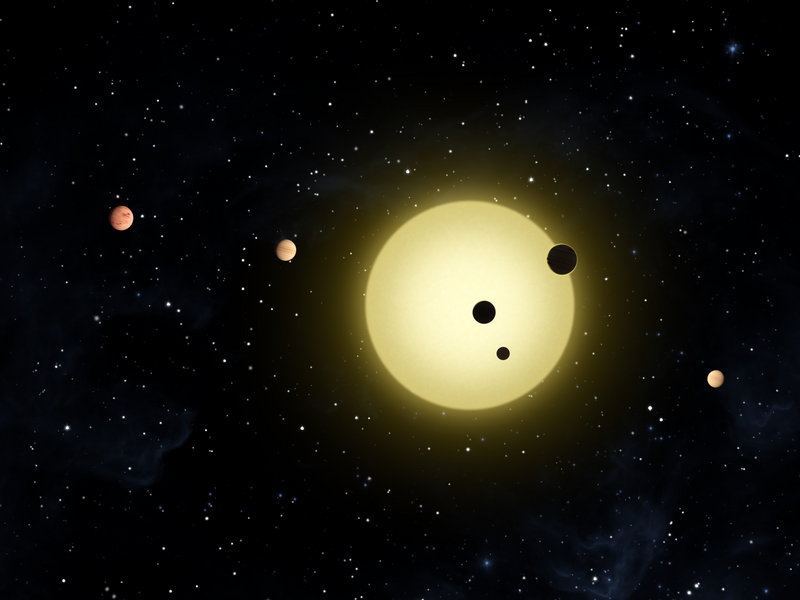WASHINGTON – An orbiting NASA telescope is finding whole new worlds of possibilities in the search for alien life, spotting more than 50 potential planets that appear to be in the habitable zone.
In just a year of peering out at a small slice of the galaxy, the Kepler telescope has discovered 1,235 possible planets outside our solar system. Amazingly, 54 of them are seemingly in the zone that could be hospitable to life — that is, not too hot or too cold, Kepler chief scientist William Borucki said.
Until now, only two planets outside our solar system were even thought to be in the “Goldilocks zone.” And both those discoveries are highly disputed.
Fifty-four possibilities is “an enormous amount, an inconceivable amount,” Borucki said. “It’s amazing to see this huge number because up to now, we’ve had zero.”
The more than 1,200 newfound celestial bodies are not confirmed as planets yet, but Borucki estimates 80 percent of them will eventually be verified. At least one other astronomer believes Kepler could be 90 percent accurate.
After that, it’s another big step in proving that a confirmed planet has some of the basic conditions needed to support life, such as the proper size, composition, temperature and distance from its star. More advanced aspects of habitability such as atmospheric conditions and the presence of water and carbon require telescopes that aren’t built yet.
Just because a planet is in the habitable zone doesn’t mean it has life. Mars is a good example of that. And even if some of these planets are found to contain life, it may not be intelligent life; it could be bacteria or mold or some kind of life form people can’t even imagine.
All the celestial bodies Kepler looks at are in our Milky Way galaxy, but they are so far away that traveling there is not a realistic option. In some cases it would take many millions of years with current technology.
But what Kepler is finding in distant parts of the galaxy could be applied to exploring closer stars, astronomers say. “Our grandchildren will have to decide what’s the next step,” Borucki said. “Do they want to go there? Do they want to send a robot?”
Sixty-eight of the planet candidates Kepler found are considered Earth-sized, including the first ones ever discovered to be smaller than Earth. An additional 288 planets were less than twice the size of Earth.
Send questions/comments to the editors.



Success. Please wait for the page to reload. If the page does not reload within 5 seconds, please refresh the page.
Enter your email and password to access comments.
Hi, to comment on stories you must . This profile is in addition to your subscription and website login.
Already have a commenting profile? .
Invalid username/password.
Please check your email to confirm and complete your registration.
Only subscribers are eligible to post comments. Please subscribe or login first for digital access. Here’s why.
Use the form below to reset your password. When you've submitted your account email, we will send an email with a reset code.